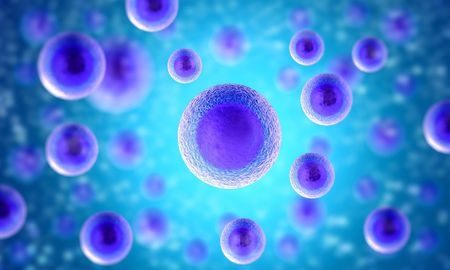Understanding Totipotent Stem Cells

Within the world of stem cell research, “pluripotent” has been the keyword for years, and for good reason: pluripotent cells have the ability to transform into any type of cell that makes up the body. However, a new study led by researchers at the University of California, Berkeley recently uncovered that pluripotent stem cells can actually morph into totipotent cells when they lose one single microRNA (miRNA). This discovery could have enormous implications in the realm of stem cell therapy and beyond.
What Are Totipotent Cells?
While pluripotent cells can be pushed to develop into any type of cell in the body, totipotent cells are perhaps even more versatile, because they can actually form an entire organism. Under natural circumstances, a totipotent cell forms when sperm fertilizes an egg. Also known as a zygote, this totipotent cell continues to divide to give rise to the trillions of cells that form the human body. In other words, a totipotent cell is the only one that can also give rise to extraembryonic tissues like the placenta and yolk sac that are needed to form new life.
Understanding miRNAs
MicroRNAs are small RNAs that do not code and do not translate into proteins. However, they do play a vital role in regulating gene expression and influencing cell fate. This means that miRNAs are responsible for restricting cell fate of pluripotent cells and acting as a barrier of sorts to reprogramming. When even just one miRNA of a cell is adjusted or manipulated, it has the potential to change the entire fate of a cell.
The Research
Lin He, Ph.D., an associate professor of molecular and cell biology at UC Berkeley, led this study, entitled, “Deficiency of MicroRNA mrR-34a Expands Cell Fate Potential in Pluripotent Stem Cells.” It explored the molecular pathways that determine cell fate, a concept that could have major implications on dissecting totipotency and thus expanding known methods of generating stem cells.
Lin He and her colleagues uncovered that the miRNA known as miR-34a functions as a blockade to embryonic stem cells (ESCs) and induces pluripotent stem cells (iPSCs) that might otherwise produce extraembryonic tissue. When He and her team genetically removed the miR-34a, ESCs and iPSCs alike expanded their developmental patterns and formed not only embryo cell types, but also placenta and yolk sac linages. Also significant is the fact that the effect of removing miR-34a remained steady in cell cultures for an entire month.
Dr. He explained, “What is quite amazing is that manipulating just one single miRNA was able to greatly expand cell fate decisions of ESCs. This finding not only identifies a new mechanism that regulates totipotent stem cells, but also reveals the importance of noncoding RNAs in stem cell fate.” As more research opportunities arise to explore the potential of totipotent cells, regenerative medicine and stem cell therapies are poised to benefit immensely.


